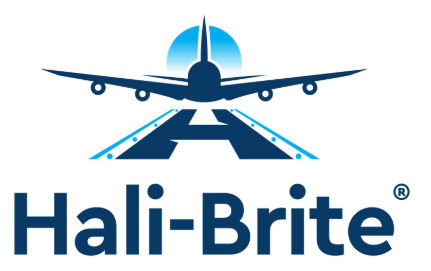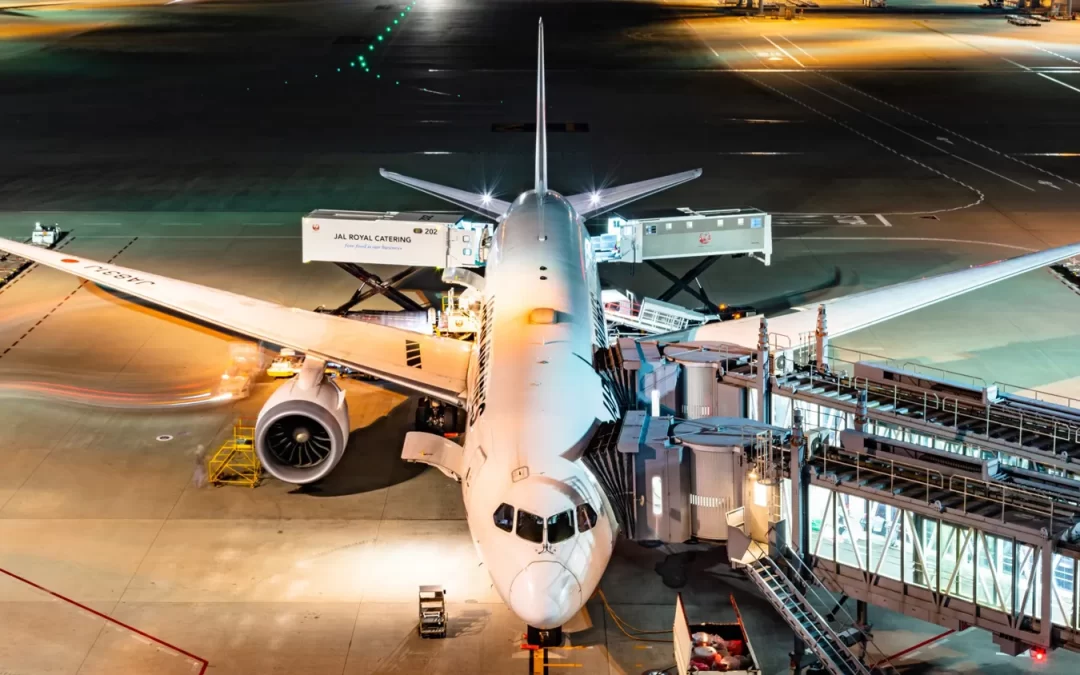Have you ever driven at night in area with few to no lights? Imagine an airplane pilot having to do the same while on a busy runway. This very thought seems absurd and goes to show how airport lighting is integral for safe airport operations, especially in the dark. The Federal Aviation Administration (FAA) sets requirements and standards for airport lights and there are numerous types, such as rotating beacons, edge lights, and obstruction lighting. Hali-Brite carries many of these innovative airfield products, but let’s learn more about how they came to be regulated for safety, their implementation, and usage.
Before we learn about airfield lighting itself, it’s best to take a look at how the FAA, the airport safety regulator and lighting compliance administration, came into existence. After WWI, pilots were navigating planes using magnetic compasses and landed at night by bonfire. When commercial airlines finally came into existence, a concern for safety grew. Aviation leaders called upon the federal government to improve safety, resulting in the Air Commerce Act of 1926. This act was utilized to provide licensure, certify aircrafts, create airways, and enforce air traffic rules. Similar safety acts were passed throughout the years, but it wasn’t until 1950 where the initial incarnation, albeit under a different name, of the FAA was created. The Federal Aviation came to be thanks to a bill introduced by senator Monroney. The agency became an administration in 1967 to enforce and regulate aircraft and aircraft equipment manufacturing, operations, and maintenance. A full list of airport lighting certification programs and standards can be found here.
With high standards in place, airport lighting was able to be manufactured with safety in mind. Runway edge lights are considered the most important lights at an airport or airfield as they illuminate the sides of runways, much like traffic lights. Another important aspect of airport lighting is the rotating beacon. Rotating beacons are like the lighthouses of the airfield world. Also called aerodrome beacons, these rotating flashing strobes are necessary for pilots to locate an airport at night. Both edge lights and rotating beacons come in an array of colors that mean different things to pilots. Edge lights are typically white, but turn yellow on instrument runways to signify caution. Each rotating light is color-coded for different airports.
Airport Beacon Colors
- White and Green Flashes – Civilian airports
- White and Yellow Flashes – Water Airports
- White, Yellow, and Green Flashes – Heliports
- Two Swift White Flashes and a Green Flash – Military Airport
Other lights besides aerodrome lighting include approach light systems, which is a way for pilots to transition from instrument flight to visual for landing, and visual glideslope indicators, allowing for a pilot to touch down smoothly on the runway. A more surprising instance of airport lighting is the wind cone. Wind cones can be upgraded to contain lights and allow pilots to gauge wind speed and direction. Wind cones have an interesting history that will be expanded upon in another article that you can read here at Hali-Brite.
One major component of an aviation lighting system is the obstruction light. Airport lighting is all about preventing hazardous situations, so obstruction lighting is necessary to mitigate any dangers pilots could encounter. Obstruction lights, or aircraft warning lights, are attached to towers for collision avoidance. They’re typically used at night, but can also be lit during the day. Structures that are 200 feet must be equipped with a warning light. This includes antenna towers, radio towers, and telecommunication towers. Obstruction lights come in an array of intensities, perfect for different climates and weather conditions. Aircraft warning lights can also be used for navigation like many other lights, and also flash in either white or red.
Airport lighting solutions are integral for the functionality of major airports and small airfields. There is a multitude of lights necessary for airfield operations to run smoothly. From edge lights, to rotating beacons, wind cones, and more, Hali-Brite has been providing innovating airfield lighting since 1979.
Sources:
https://www.faa.gov/about/history/brief_history/

